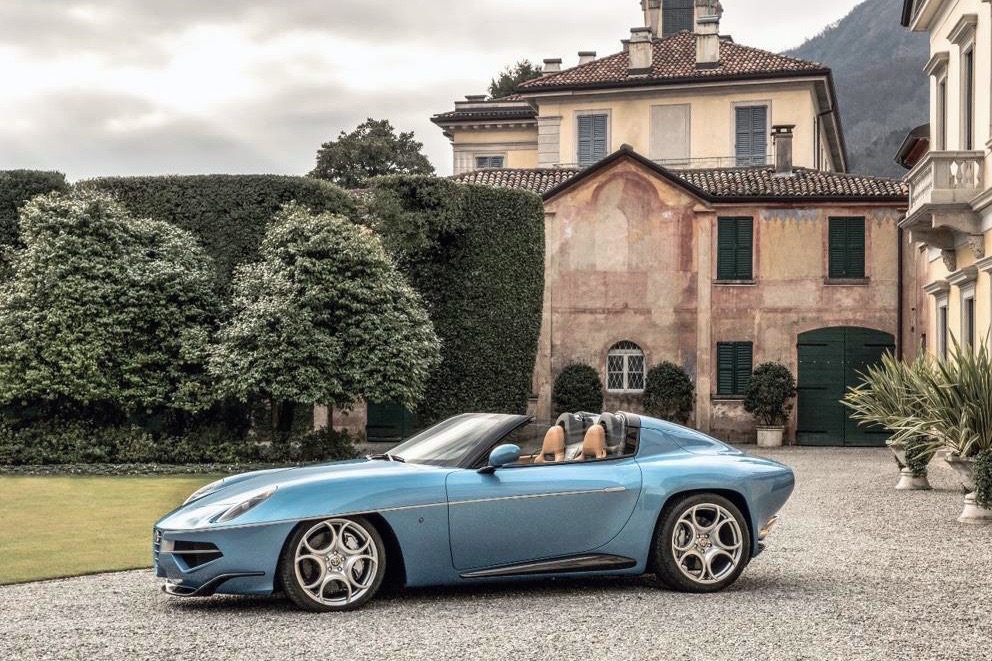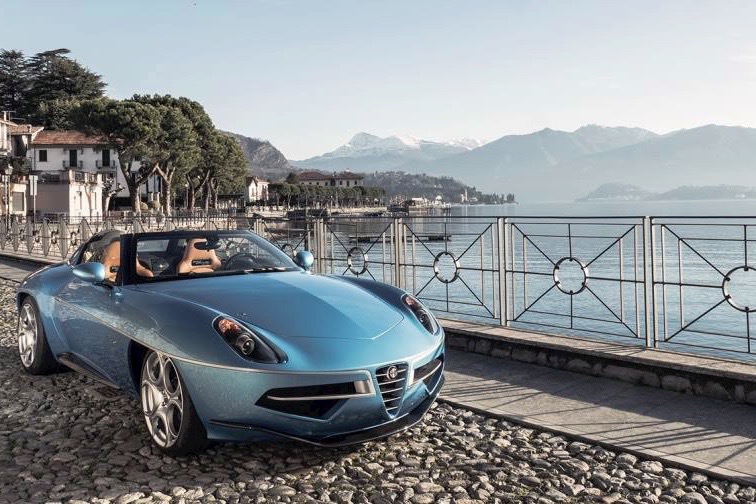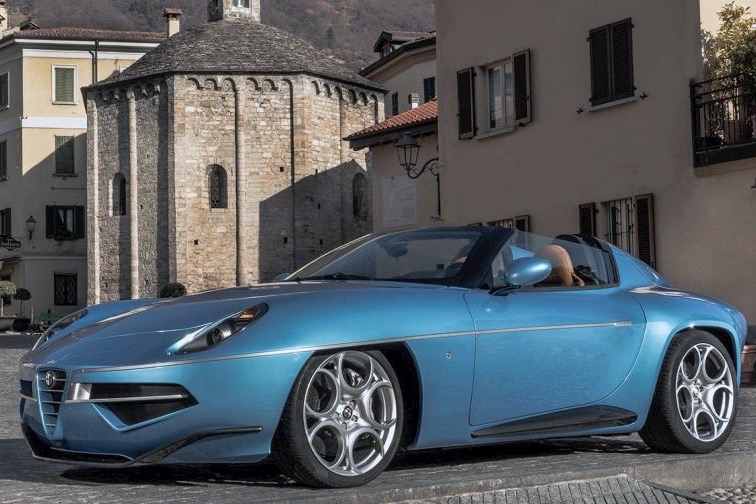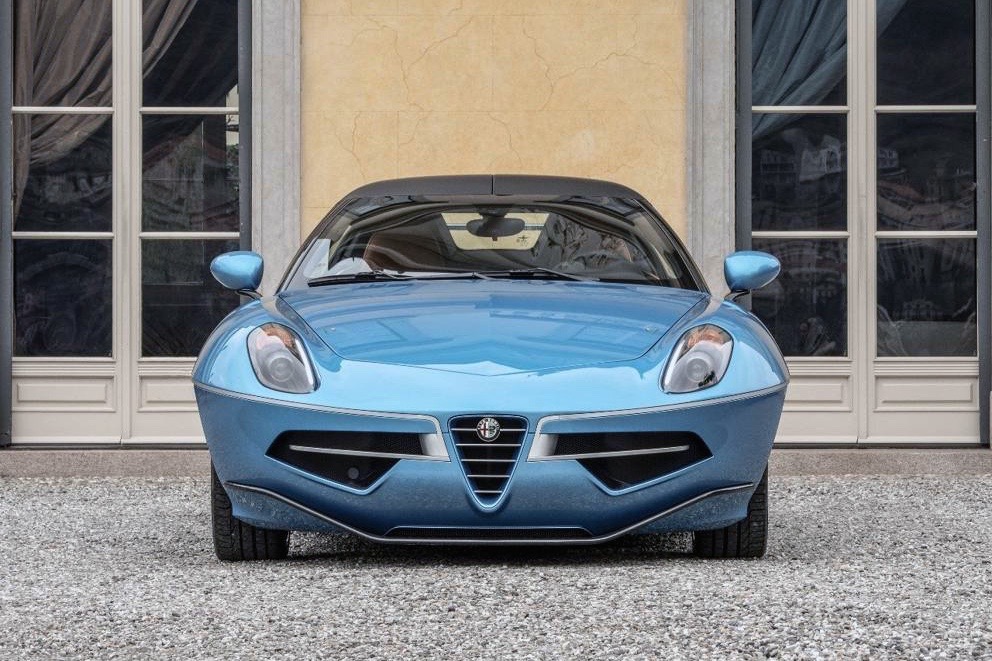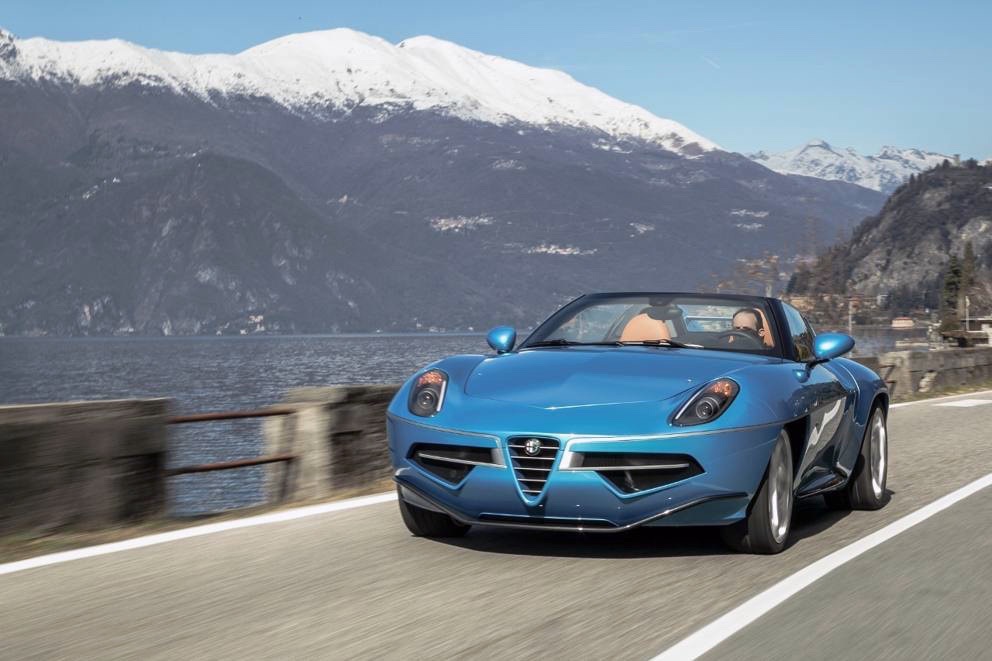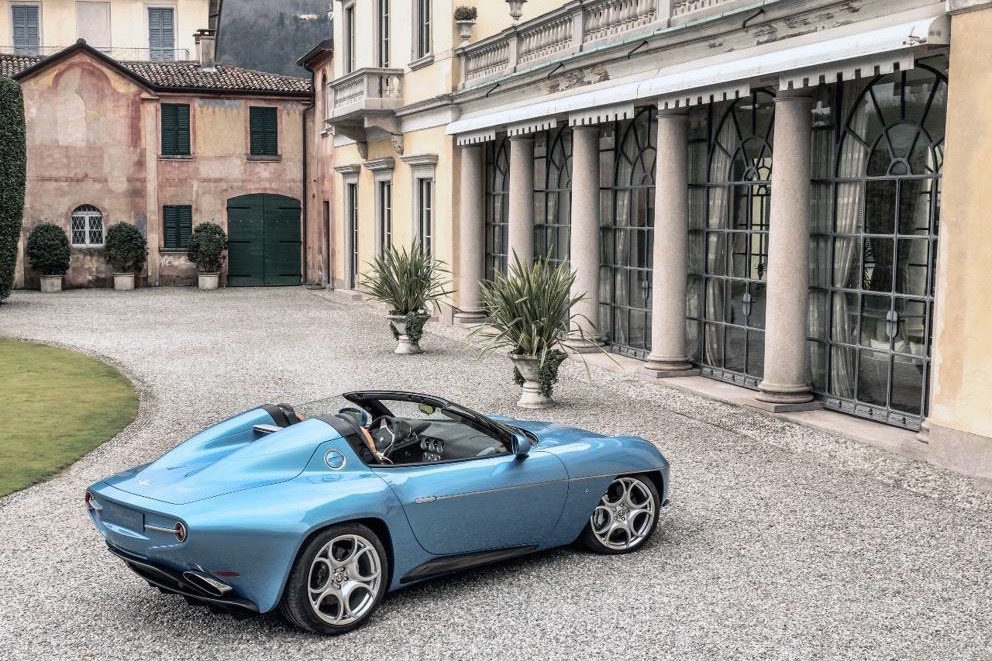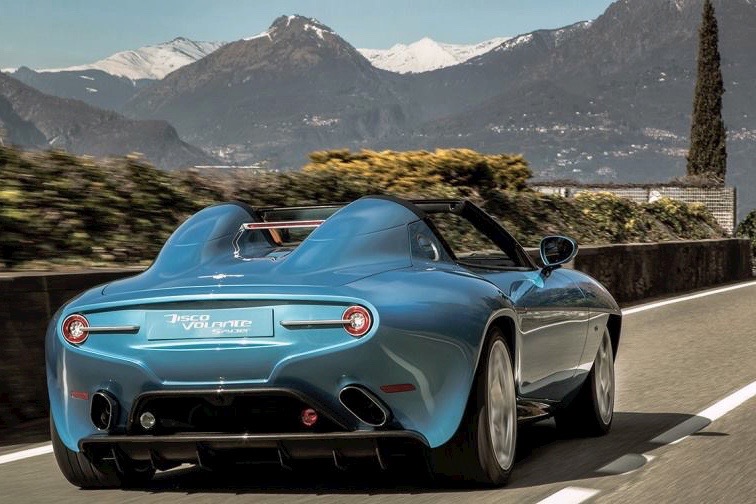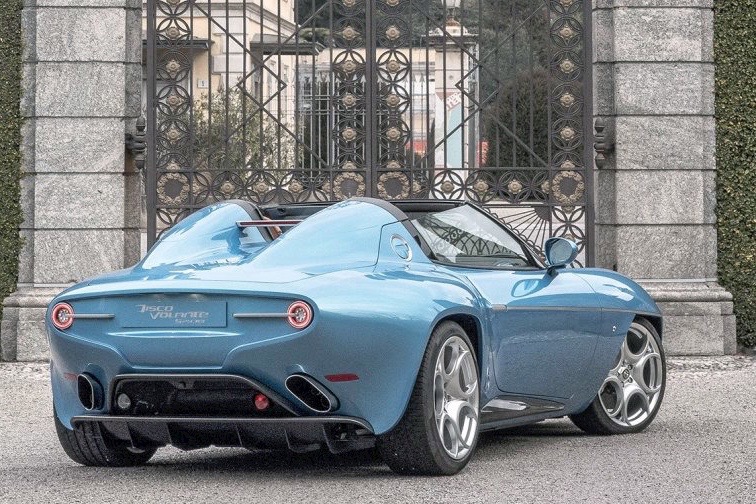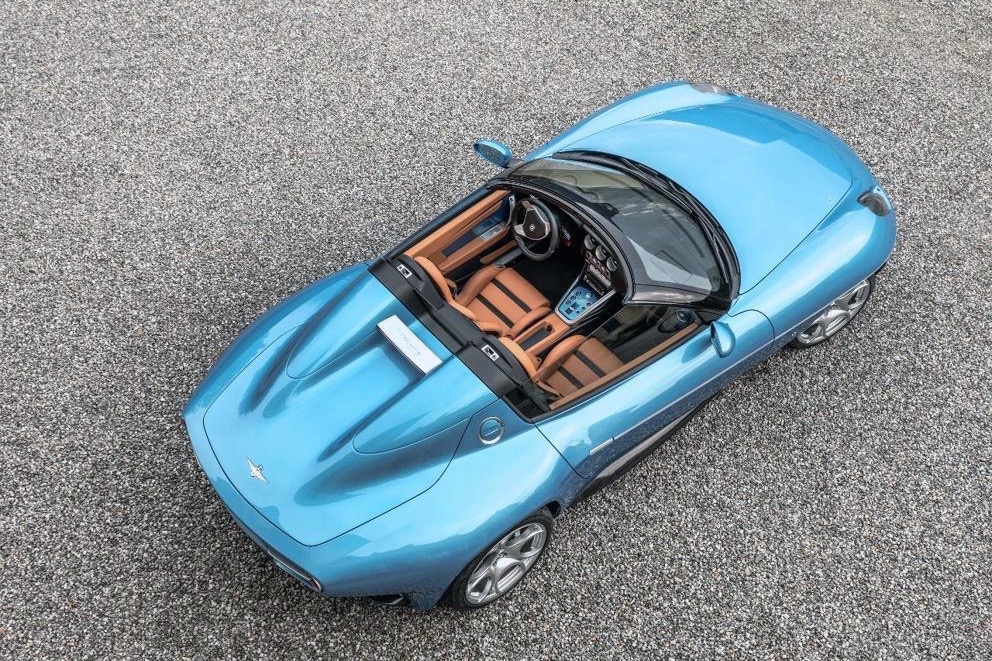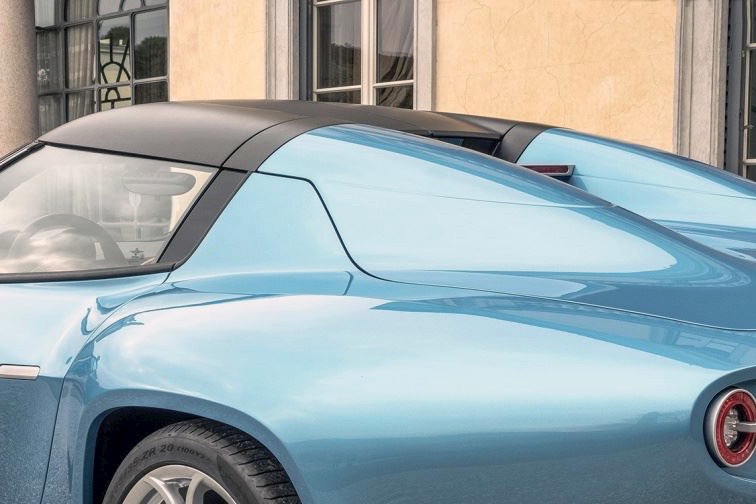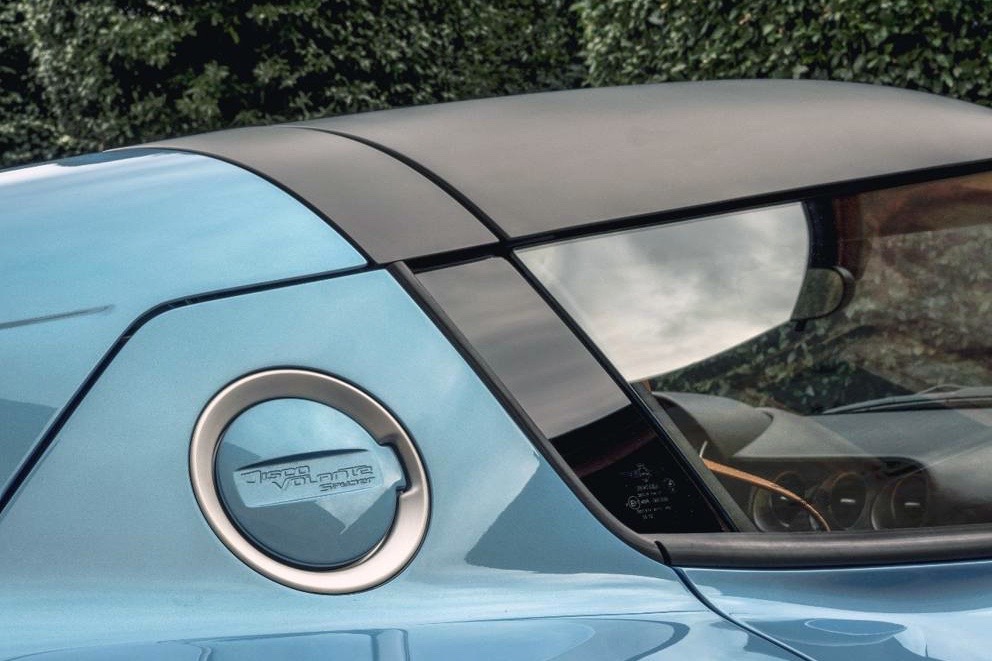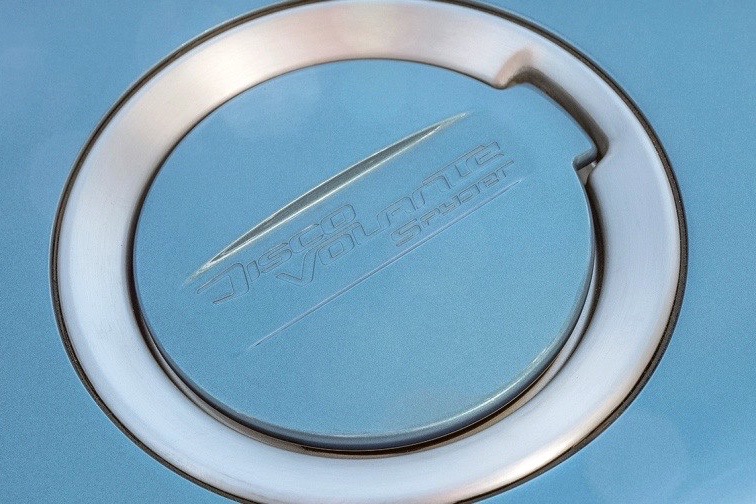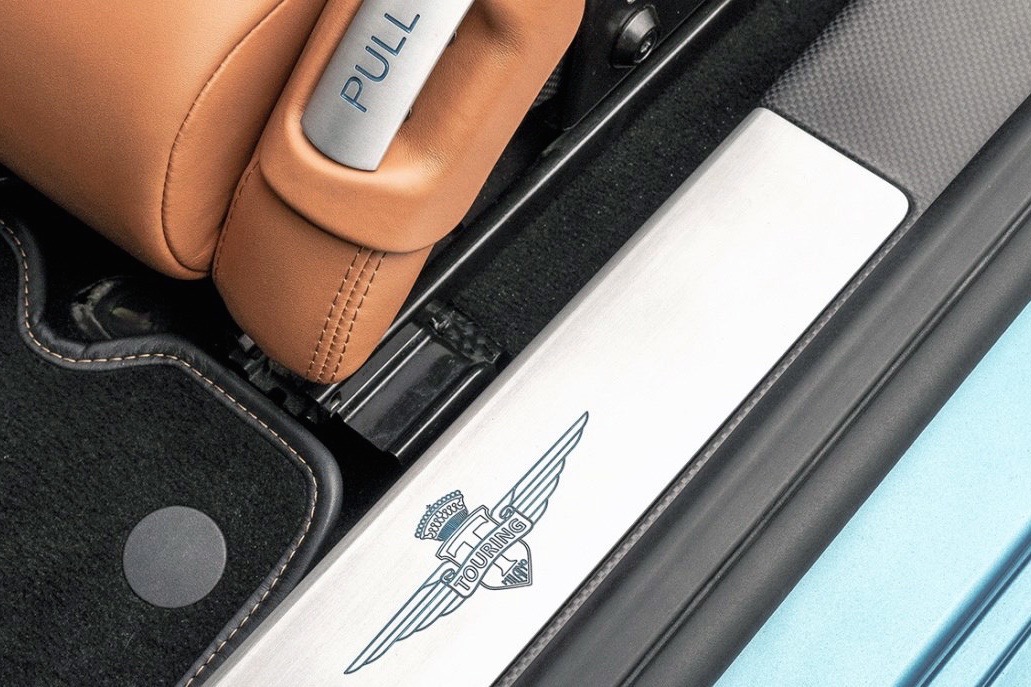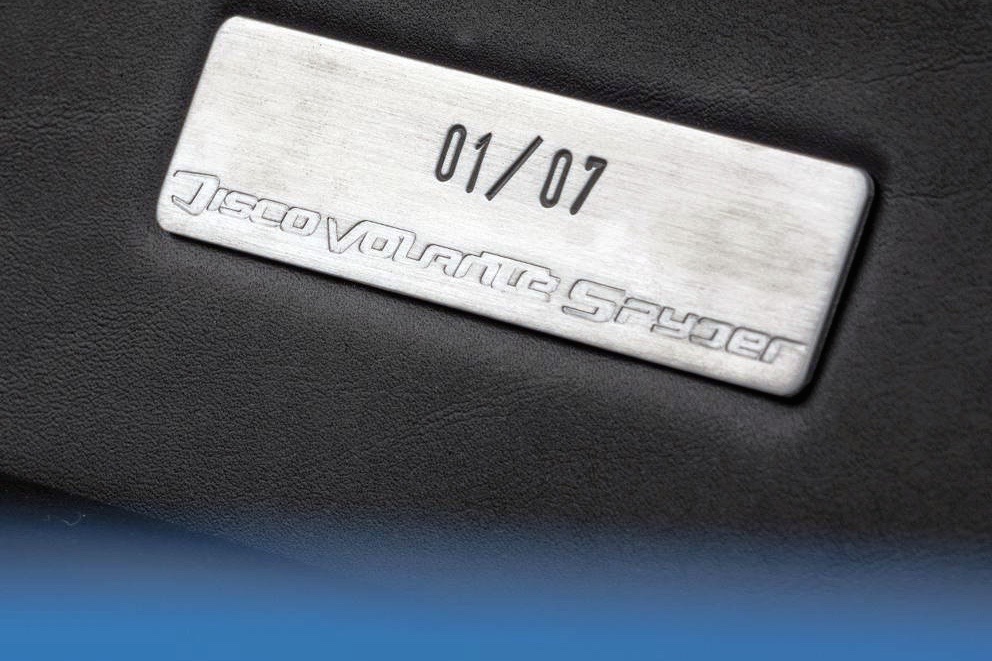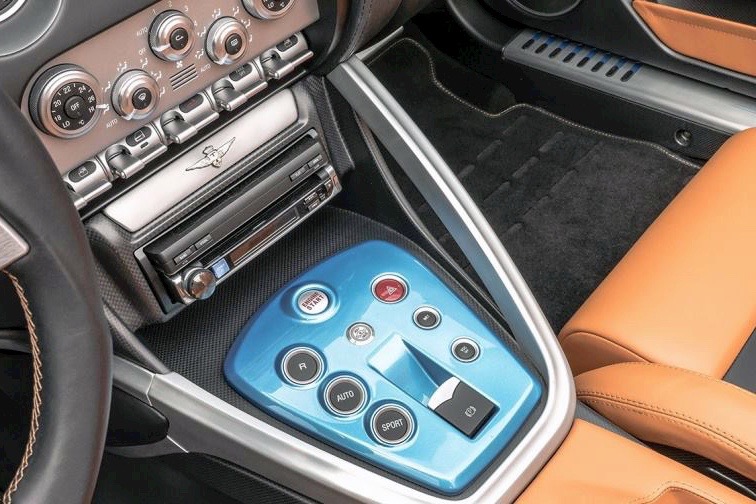Four years ago at the 2012 Geneva Motor Show, Italian design firm Touring Superleggera melted car enthusiasts’ hearts with the Disco Volante, an updated version of one of its classic concept-car designs for Alfa Romeo.
For the 2016 Geneva show, Touring lopped the roof off the Disco Volante. The Disco Volante Spider celebrates the company’s 90th anniversary in style. The Spider looks virtually identical to the previous Disco Volante coupe, but with a pair of removable carbon fiber roof panels that allow for some open-air motoring. They can be stowed in the trunk when not needed.
The name “Disco Volante” means “flying saucer” in Italian, and was first attached to an Alfa Romeo prototype that debuted in 1952. That car was meant to advance aerodynamics, and featured an impressive 0.25 drag coefficient. Two more copies were eventually built, along with two topless spiders.
It also looked like the alien spacecraft it was named after. “Coachbuilding,” or the re-styling of production cars, used to keep many companies like Touring in business, but the complexity of modern cars makes that job more difficult. When it debuted in 2012, the Alfa Romeo-based modern Disco Volante was praised as a return to form.
Touring did not release many technical details on the Disco Volante Spider, but like the coupe, it’s based on the discontinued Alfa Romeo 8C Competitizione. That means there’s likely a Maserati-sourced 4.7-liter V8 under the hood, with 444 horsepower and 350 pound-feet of torque, enough for 0 to 60 mph in the 4.0-second range, and a top speed in the neighborhood of 180 mph.
Alfa only built 500 8C coupes, and 500 Spiders, so Touring had to sacrifice a very rare car to make this beauty. But the Disco Volante Spider will be even rarer. Only seven will be made, and each will be painted in a unique color. The show car’s fetching shade is called Blue Ceruleo.
